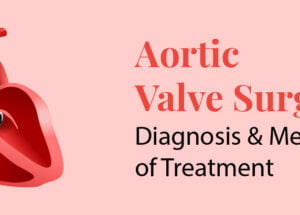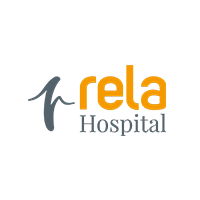How to increase haemoglobin?
January 8, 2024

Haemoglobin
Haemoglobin carries oxygen throughout our bodies which is essential for healthy cell function and general wellbeing. Weakness, exhaustion, and other health problems can result from low haemoglobin levels. Maintaining healthy levels of haemoglobin is critical for optimum functioning of our body.
Contents
What is haemoglobin?
Red blood cells contain a protein called haemoglobin, which is rich in iron and gives your blood its red colour and also determines the shape of red blood cells. It is a protein that is essential for maintaining good health because it not only carries oxygen to all parts of the body but also removes carbon dioxide from cells by carrying it to the lungs for expulsion.
Consequences of low haemoglobin
Low haemoglobin levels could indicate an underlying medical issue.Extremely low haemoglobin count can lead to anaemia, kidney disease, liver disease, hypothyroidism, and bone marrow-related cancers (like leukaemia).Anaemia is one of the serious health issues that can result from low haemoglobin levels in the blood.Anaemia arises from either insufficient red blood cells in your body or from red blood cells with insufficient haemoglobin to supply enough oxygen to your tissues and organs. Anaemia can cause a number of symptoms as well as medical issues.
Low haemoglobin symptoms
Anaemia, which can result in symptoms like shortness of breath and a fast or irregular heartbeat, can affect people with low haemoglobin levels.
Pale skin and gums, exhaustion, weakness, dizziness, bruising that occurs frequently or for no apparent reason, and recurrent headaches
Reasons for low haemoglobin
Anaemia, or low haemoglobin count, is brought on by a number of things. Several common causes of low haemoglobin levels include the following:
- Nutritional deficiencies: Iron, vitamin B12, and folate deficiency, among other essential nutrients, are the most common causes of anaemia.
- Blood loss: Injury, surgery, gastrointestinal bleeding (tumours, ulcers), or heavy menstrual flow in women can all result in significant blood loss and anaemia.
- Chronic diseases: The body’s capacity to create or maintain healthy red blood cells can be hampered by a number of chronic conditions, including inflammatory diseases, chronic kidney disease, and some forms of cancer.
- Hemolysis: This is the early breakdown of red blood cells and can be brought on by genetic disorders, infections, or specific drugs.
- Disorders of the bone marrow: Low haemoglobin levels can result from conditions like leukaemia, aplastic anaemia, and myelodysplastic syndromes that impair the bone marrow’s capacity to produce red blood cells.
- Pregnancy: To support the developing foetus, the body needs more iron during pregnancy. If dietary intake is inadequate, anaemia may result.
- Chronic infections: Anaemia can result from certain infections that cause the destruction of red blood cells, such as malaria and some parasitic infections.
- Autoimmune disorders: By inciting the immune system to target healthy red blood cells, autoimmune illnesses such as lupus and rheumatoid arthritis can result in anaemia.
- Haemorrhage: Severe bleeding brought on by internal injuries or trauma can cause haemoglobin levels to fall rapidly.
- Certain drugs: Anaemia is a side effect of some medications because they can cause hemolysis or interfere with the production of red blood cells.
- Taking alcohol can lead to a fall in haemoglobin levels.
Normal range of haemoglobin
Haemoglobin levels are determined by a blood test performed by a qualified healthcare professional and are expressed in grams per deciliter (g/dL).When a person’s haemoglobin levels fall below the usual ranges, they are diagnosed with low haemoglobin.
Normal haemoglobin levels can vary slightly based on age, sex, and other factors. However, in general, adult males with haemoglobin levels below 13.5 g/dL, adult females with levels below 12.0 g/dL, and children with levels below 11 g/dl are considered low.
Ways to increase haemoglobin naturally
The subsequent actions can effectively raise haemoglobin levels and advance general well-being:
Green leafy vegetables : Rich in iron, folate, and vitamin C, leafy greens like broccoli, spinach, and kale are necessary for the production of haemoglobin. Red blood cell formation is aided by iron, and cell division is aided by folate. Incorporate bell peppers, broccoli, tomatoes, berries, and citrus fruits (oranges and lemons) into your meals. Vitamin C improves the body’s ability to absorb iron, which facilitates iron utilisation.
Beans and Legumes: Rich in iron, protein, and folate,beans and legumes include kidney beans, chickpeas, and lentils. Haemoglobin levels can be raised considerably by including these plant-based protein sources in your diet.
Red Meat: Heme iron is found in red meat, particularly in lean cuts like lamb and beef, which the body can readily absorb. Heme iron is necessary for the synthesis of haemoglobin.
Fish and shellfish are among the seafood and poultry that contain iron and vitamin B12, both of which are essential for healthy haemoglobin levels. Include lean poultry cuts and a variety of heart-healthy fish, such as tuna, salmon, and sardines, because they are rich in omega-3 fatty acids.
Nuts and Seeds: Rich sources of iron, foods such as pumpkin seeds, walnuts, almonds, and flaxseeds can increase haemoglobin levels. They are rich in essential minerals, iron, and vitamin E. You can keep your haemoglobin levels stable and get enough iron in your diet by eating these nutritious snacks.
Whole grains and fortified cereals:Ensuring that whole grains and fortified cereals are high in essential nutrients such as iron is crucial. These fortified foods are tasty and convenient ways to boost your haemoglobin levels.
Fruits: Eating apples, berries, pomegranates can help to maintain and increase blood haemoglobin levels.Also , consuming fruits rich in vitamin C like grapefruits, oranges and lemons also help with haemoglobin levels.Vitamin C and other antioxidants present in these fruits help in absorption of iron and in turn helping in haemoglobin production.
Raising haemoglobin levels at home
The following actions can be taken at home to maintain appropriate haemoglobin levels:
A few chemicals can stop iron from being absorbed. Avoid consuming excessive amounts of tea, coffee, or foods high in calcium (dairy products) during meals as these can impair the absorption of iron.
Food prepared in iron cookware has a higher iron content.
To maintain good blood circulation and general health, sip a sufficient amount of water throughout the day.
Eat foods high in probiotics, such as yoghurt or fermented foods, to keep your gut healthy. Proper absorption of nutrients, including iron, is facilitated by a healthy gut.
To increase red blood cell production and blood circulation, participate in regular physical activity.
Prolonged stress can impact various aspects of health, such as the synthesis of red blood cells. Manage your stress.
Food alone may not always be an effective treatment for low haemoglobin counts. Oral iron supplements or additional treatments may be necessary for you. Iron supplements may also be recommended by doctors in cases of extremely low haemoglobin levels.These function by bringing the body’s iron levels up gradually over a few weeks.
When to call a doctor?
In certain cases, diet and supplementation are insufficient to treat low haemoglobin levels. As you work to increase your haemoglobin level, let your doctor know if you experience any of the following symptoms:
- White teeth and skin
- Weakness and exhaustion in the muscles
- Excessive headaches
- Rapid or erratic heartbeats
- Persistent or mysterious bruises
Conclusion
Most cases of low haemoglobin can be treated with simple lifestyle changes, such as eating foods that are high in haemoglobin, including a balanced diet, and getting regular exercise. Medication and iron supplements might be necessary in certain situations.
Frequently Asked Questions
1. What are the best vegetarian foods to raise haemoglobin levels?
Vegetarians can consume vitamin C-rich foods like berries, oranges, and kiwis. Iron and folate-rich green vegetables, such as spinach, broccoli, peas, and green beans, help raise haemoglobin levels.
2. In the event that haemoglobin levels are too low, what happens?
Blood with dangerously low haemoglobin levels can be lethal because most body parts won’t get oxygen. It can lower immunity, raise the risk of cancer and heart attacks, induce organ failure, and chronic kidney disease.
3. How quickly can haemoglobin increase?
The underlying reason for low haemoglobin and the type of treatment being used can affect how quickly haemoglobin levels increase. Improvements, however, can be seen over a few weeks to months with the right interventions.
4. Which beverage increases haemoglobin?
Drinks high in iron could help someone’s haemoglobin levels rise. This could be a juice or smoothie made with spinach or kale, liquid iron supplements, prune extract and beetroot extract.







